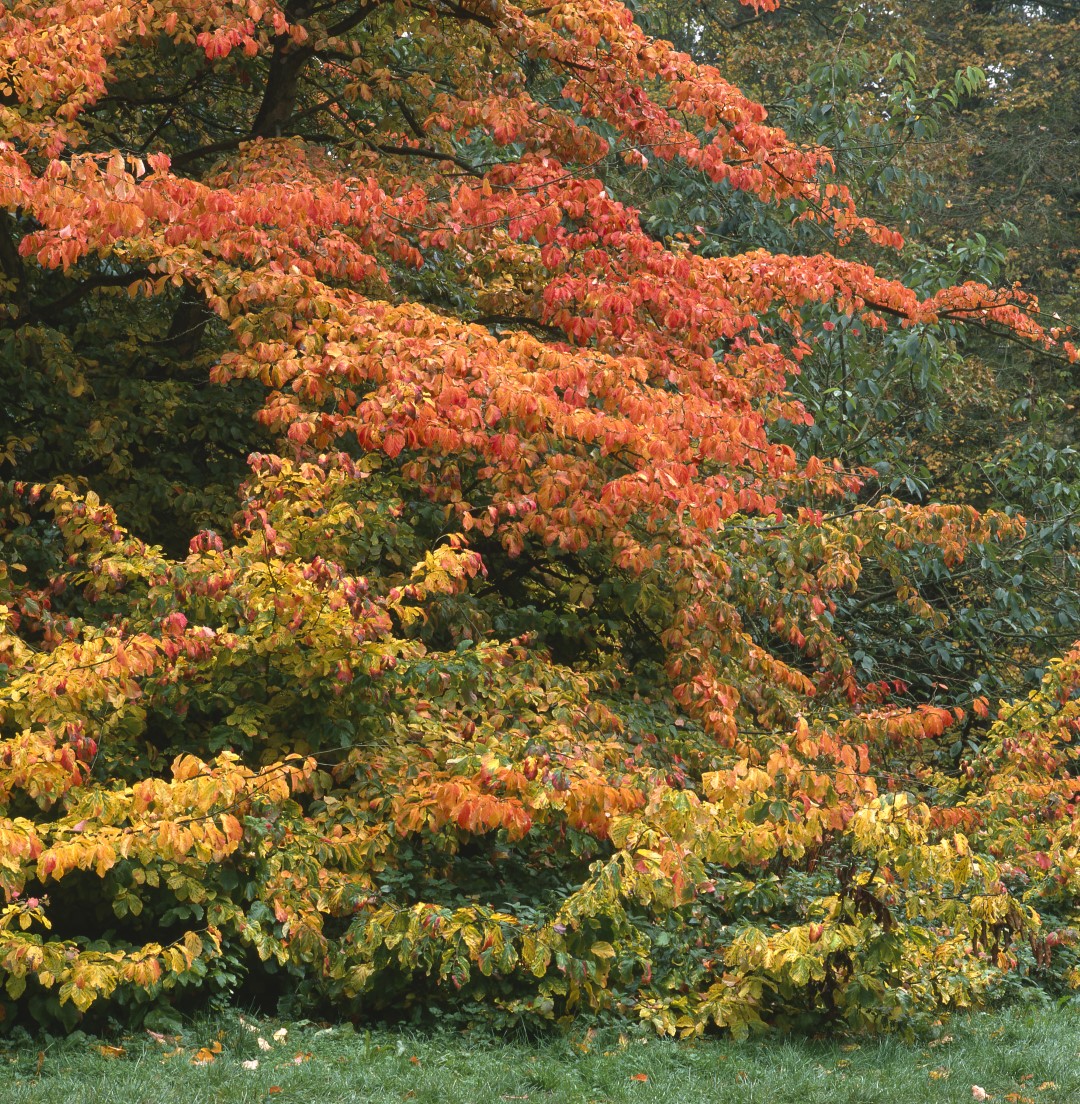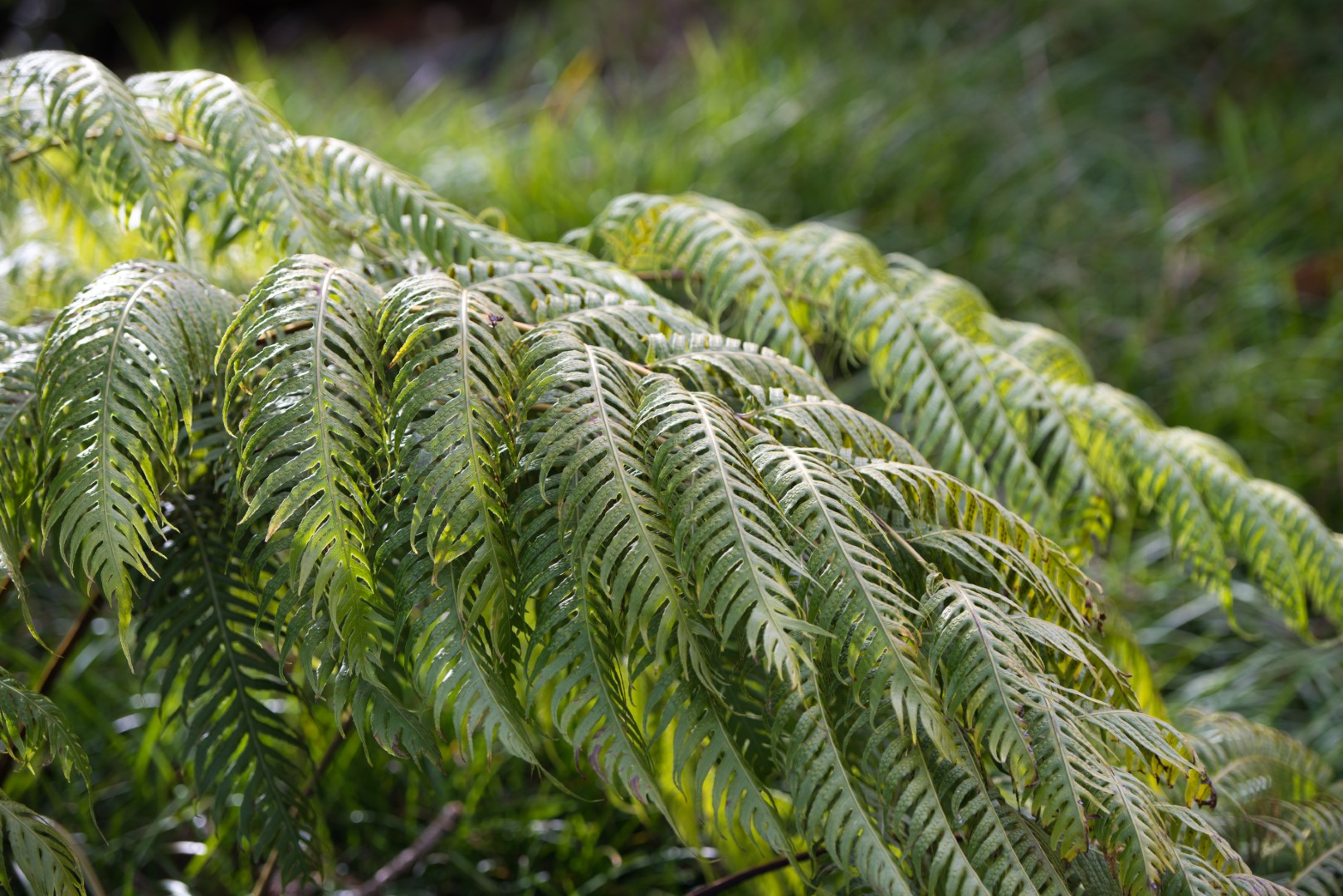Sue Whigham chooses a few firm plant favourites that have left a lasting impression
A girlfriend and I spent a few days in New York a decade ago. It was rather like being in a film set to be honest and if you asked me what the highlights were, we might be here for a while.
One day we walked across the Brooklyn Bridge and into Brooklyn itself, a world of beautiful brownstone houses and glorious street trees. We then got on the subway and headed towards the Brooklyn Botanic Garden, a 52 acre oasis of calm in a bustling city. It was autumn and the salvias were in full swing. One particular treasure, soaring above our heads, caught my eye to the extent that when we got home (having failed to find anyone to ask right away), I wrote to the Garden to find out which salvia it was. They didn’t write back! So if anyone is asking, this salvia, still unknown to me, is high on a list of ‘a few of my favourite things’.
I’ve always loved Parrotia persica, or Persian ironwood, and think that it would be one of the first trees I would plant if I was starting again. There’s a fabulous specimen at Sissinghurst growing by the South Cottage which Harold Nicholson used for his writing, no doubt inspired by the rich colours of the Cottage Garden. Everything about this tree – from its bark, which peels as it matures, to its extraordinary winter flowering petal-less flowers – is lovely. It is in the Hamamelidaceae family and its dark red flowers are similar to those of the Hamamelis or witch hazel, flowering as they do from bare stems.
A particularly eye-catching form is ‘Vanessa’, which not only has great autumn colour (red, orange and plum purple) but glossy red shoots and young leaves. Interestingly, P. persica ‘Vanessa’ was named after a genus of butterflies which includes the Red Admiral, Vanessa atlanta, and the Painted Lady, Vanessa cardui.
Heptacodium miconioides, also known at the Seven Son Flower of Zhejiang is, as the name implies, a Chinese shrub which was introduced to the Hillier Gardens and Arboretum in the early 1980s. I first saw a smallish specimen in a private garden up above Wye and fell for its name, its form and the elderly gentleman whose garden we were visiting. That was a long time ago but I’m reminded of it every time I see the fabulous mature specimen in a garden in Benenden which opens for the NGS. Each glossy leaf has three particularly prominent veins and a habit of curling under the branch – the whole resembling tubes. Clusters of seven lightly scented white flowers appear in late summer and are particularly appealing to butterflies and foraging insects. In a good warm autumn the calyces enlarge and then turn bright red. Like the parrotia, the grey bark peels as the shrub matures with the new bark underneath being a very dark crimson.
Betula utilis ‘Jim Russell’. This cultivar comes from the Arboretum Wespelaar in Belgium and originates from seeds collected in China by one Jim Russell, described as a ‘horticultural grandee’, and one time curator of the Castle Howard Arboretum (now known as the Yorkshire Arboretum). His life story is well worth reading. It was at a later stage of his life that he started on his world travels in earnest, collecting both plants and seeds from China, Japan, Sri Lanka and the West Indies.This spectacular tree has a dark peeling bark which reveals an inner layer of burnished coppery colours combined with red and purple tones. I think this might have to be No.1 on the ever growing list of a few favourite things.

To my mind there is nothing to beat a native spindle or euonymus for both its autumn colour and its fabulous fruits. The fruits can be pink, red or white but what is so stunning is that the seed inside is covered with an orange coating known as the aril, which contrasts so spectacularly with the fruits. The aril provides a feast for birds who digest it and then spread the seeds around, if you are very lucky. And it seems that robins guard euonymus very fiercely once they’ve claimed it as their own, seeing off all comers. To be honest, any spindle could join the list but I think that Euonymus hamiltonianus subsp. sieboldianus ‘Coral Charm’ rates highly, with its combination of coral pink fruits and an orange-red seed. This shrub varies too in that its autumn colour is a soft lemony yellow.
Every late summer I see clouds of Japanese anemones in other people’s front gardens and each year I think how beautiful they are. This must be the year to find a plant of either the glorious pure white A x hybrida ‘Honorine Jobert’ or perhaps the reliable and free flowering A x hybrida ‘September Charm’. Perfect for both full sun and partial shade, this particular anemone has flowers whose outer petals are purple tinted, contrasting with the pale pink of the inner petals. They float around on tall wiry stems bringing movement to the late summer border. Another cultivar I might squeeze onto my list would be A. hupehensis ‘Hadspen Abundance’.
And finally, I was reading about Helen Dillon’s move from her famous garden in Dublin back in 2016 and about the plants she would be leaving behind plus the ones she would be taking. Of course she had so many rich and rare plants but I was glad to hear that she would be taking what she calls the ‘superb large fern’, Woodwardia unigemmata or Jewelled Chain Fern. We bought this gem at one of Great Dixter’s Plant Fairs a few years ago and I have it in a large pot outside my porch. Thankfully it is hardy down to -10°C. Its arching stems can reach up to seven feet in length (but not in a pot), and when the frond rests on the soil the single bulbil on its tip takes root. Oh, and the new fronds are a ‘gorgeous brick red’. So yet another plant to add to the list…
Sue Whigham can be contacted on 07810 457948 for gardening advice and help in the sourcing and supply of interesting garden plants.
You may also like
In the Night Garden
Jo Arnell explains how to make the most of your outdoor space once darkness falls Some enchanted evening you may see me outside – mainly searching for slugs in the garden, because the cool hours of night are when they...
Contain your excitement
Jen Stuart-Smith discusses how to get creative with your pots and planters My love affair with plants started with houseplants when I was a child. As my bedroom windowsill overflowed – resulting, occasionally, in waking up with compost under my...
More than just a pretty face
Jen Stuart-Smith explores the multiple uses of some easy-to-grow garden favourites When you grow flowers for their beauty, shape and colour it can be easy to forget all the other qualities they have to offer. Some are edible, others provide...










